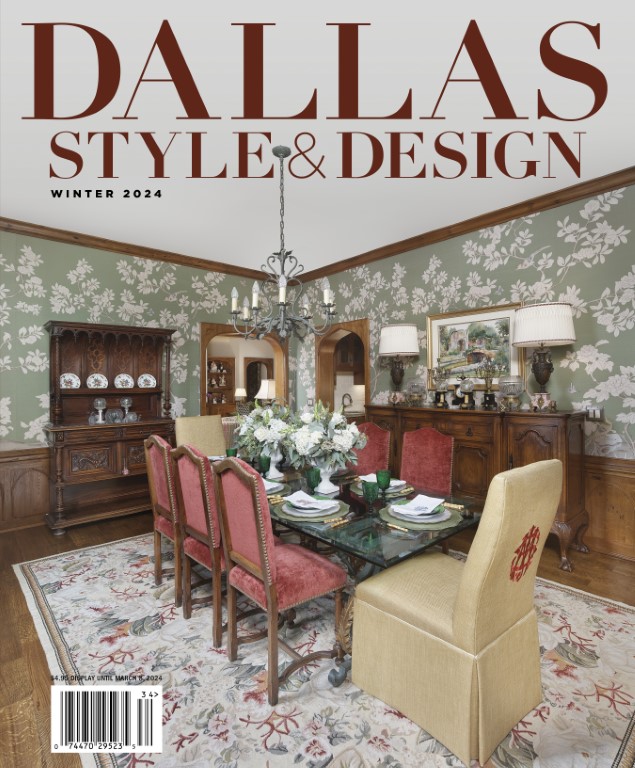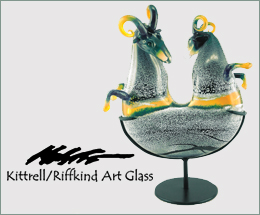“Metal was an amazing discovery,” says Tom Faulkner. “I was seduced by its stylistic possibilities— the fact that you could bend it and twist it into almost any shape you liked. I was thrilled by its strength, versatility and simplicity.”
Faulkner’s latest collection, which can be found in Dallas at the Jean de Merry showroom in the Design District, exhibits the artist’s unmistakable geometric and architectural design aesthetic. Combining metal with wood, glass and leather, Faulkner produces design-led, high-end statement furniture for both traditional and contemporary settings.
Faulkner’s first interaction with Jean de Merry was in the DnD (Design and Decoration Building) in New York. “For me, it was always the nicest showroom in the whole building. It was distinct; all their lines were different but complemented each other. There was an emphasis on material, texture and craftsmanship,” says Faulkner.
A mutual admiration resulted in the representation of Tom Faulkner by Jean de Merry in Dallas, Chicago and Los Angeles. Faulkner’s main showroom is in Chelsea, London, with a workshop in Wiltshire, United Kingdom, where all the pieces are handmade by a team of skilled craftsmen.
Since its inception in the early 1990s, Tom Faulkner the company has grown into an award-winning and much celebrated creative business. It is loved by both private clients and professional interior designers for its show-stopping tables and chairs, elegant accessories, faultless standards of quality, and exceptional service.
It is Faulkner’s love of geometry, passion for architecture and nature, and his fascination with Victorian engineering that feed into a singular aesthetic of elemental lines and shapes combined with daring proportions and exquisite natural materials.
Faulkner’s work is characteristically clean lined and could incorrectly be considered simple, but when one stands before The Avebury dining table, with its entwined plate steel based, suddenly the complexity of his design becomes apparent. Many of his pieces are created without a seam in sight and each is as much a work of art as it is a versatile piece of furniture.
Faulkner first began designing furniture in 1993. His early pieces featured complex and intricate graphic patterns painted onto wooden tabletops, which proved extremely popular. Keen to explore the possibilities of form and shape, he began designing tables from scratch.
Faulkner has always admired the modernists of the last century. He says: “Metal was their material, and they embraced its strength, versatility and workability. I’m thinking of the likes of Breuer, Stam, Mies van der Rohe and, of course, Le Corbusier and Perriand. What I particularly admire about Le Corbusier was his rejection of ornament and clutter, allowing the lines to speak for themselves, and the way he realized the importance of detail and the finish. He realized there was real richness in simplicity.”
214-741-2888
jeandemerry.com
REDESIGNING DINNER AND A MOVIE
The classic dinner and a movie date has received a makeover from the talented and passionate people at Studio Movie Grill (SMG). Over the last two years, SMG has introduced Prototype 2.0 into new markets, which provides a fresh take on the entire movie-going experience.
“Our newest prototype is a marriage of 25 years of in-theater dining expertise paired with technological advancements and premium seating,” says Ted A. Low, senior director of brand+creative at SMG.
Specifically, the company has designed for enhanced online and kiosk ticketing, indoor/outdoor bar and patio spaces, and spent time studying how guests engage the SMG spaces.
Since the advent of reserved seating in theaters, lobbies required a makeover, as the role for the space changed overnight. No longer are patrons faced with queues for tickets. Instead, the space has evolved into a dynamic location for guest interaction and entertainment, whether through a pre- or post-movie cocktail or simple social engagement. “We started talking about what could really happen before, and after, a movie,” says Low. “We have created a space that is truly a place to relax, unwind and have some fun, which in turn encourages guests to enjoy socializing before and after their movie.”
With all the fun to be had outside the theater, it would be easy to forget the reason we go to the movies in the first place, but the folks at SMG have enhanced the auditoriums as well with the addition of custom recliners, huge screens and incredible sound. “Our trademark design materials are now combined with modern lounge areas that enhance SMG’s immersive movie-going experience—equal parts design, technology and Southern hospitality,” says Low.
One of its most unique design improvements is the creation of an aperture designed to literally shrink around you—from a 12-by-12-foot entry to an 8-by-8-foot exit into the corridor. This acts as an invitation to enter a movie-going headspace.
“Movie theaters are answering consumers’ calls for elevated experiences,” says Low. “We love to go to the movies, just like our guests, so it’s a constant discovery of designing spaces that attract people. As the leader in in-theater dining concepts, SMG has been hard at work over the last few years, working exclusively on improving every part of our entertainment experience with the guest in mind to encourage a relaxed and welcoming environment.”
Visit one of many SMG locations in the Dallas metroplex, including its newest in DFW in The Colony or Arlington’s Lincoln Square, or established locations in Colleyville, Northwest Highway, Lewisville, Arlington Highlands, and on Royal Lane or Spring Valley.
972-388-7888
studiomoviegrill.com
 A WALK DOWN THE HALL COLLECTION
A WALK DOWN THE HALL COLLECTION
There is a half acre of landscaped walkway adjacent to KPMG Plaza, which spans Ross Avenue to Flora Street in downtown Dallas, that serves to connect the Dallas Business District with the Dallas Arts District. Filled with nearly two dozen contemporary sculptures, the Hall Texas Sculpture Walk is the second phase of developer Craig Hall’s mixed-use development, called Hall Arts, designed by HKS.
Each of the pieces is new or recently commissioned from the world-class Hall Collection, and they come from some of the finest artists around Texas. Hall is a champion of creating a sense of place by integrating art, first realized at Hall Office Park in Frisco. He is now imparting that same design philosophy in the Dallas Arts District.
Pieces include large-scale works by William Cannings, James Surls, John Henry, Joseph Havel, Andrew Rogers, Stephen Daly, Mac Whitney, George Tobolowsky and Jesús Moroles. Additional works by Chris Lattanzio, Eliseo Garcia, Richard Long, Sonia King, Michelle O’Michael and Deborah Ballard can also be seen.
The Hall Texas Sculpture Walk is a perfect location to visit, spend the afternoon and experience world-class sculpture.
THE ART OF ACQUISITION
The City of Dallas has become a large supporter of the arts, and this is no better exemplified than by the Dallas Art Fair Foundation Acquisition Program. With funds made available through the Acquisition Program, the Dallas Museum of Art (DMA) is given the opportunity to acquire artwork from the Fair for its permanent collection. Tripling in size from its first iteration, this year’s program is generously funded with a $150,000 grant.
“The diverse works acquired from the Fair span the media of painting, photography, monumentally scaled drawings, and ceramics, ranging in date from 1949 to 2017,” says DMA associate curator Katherine Brodbeck. “They complement the Museum’s exhibition program over the next 12 months and beyond, which will feature works by women artists and by artists from the African diaspora and Latin America. We hope to share these works with audiences in the near future.”
 The works selected as part of the 2018 acquisition include Brie Ruais’ ceramic wall work Broken Ground Red (Albertz Benda); Sanford Biggers’ quilt work Sirroco (Massimo De Carlo); Matthew Ronay’s sculpture Condition (Casey Kaplan); Tony Lewis’ wall drawing Nes (Shane Campbell Gallery); two silver gelatin prints by Geraldo de Barros, both untitled, from the series Fotoformas Sao Paulo (Sicardi Gallery); Shara Hughes’ painting Gusto (Rachel Uffner Gallery); and Alicia Henry’s untitled mixed media work (Liliana Bloch Gallery).
The works selected as part of the 2018 acquisition include Brie Ruais’ ceramic wall work Broken Ground Red (Albertz Benda); Sanford Biggers’ quilt work Sirroco (Massimo De Carlo); Matthew Ronay’s sculpture Condition (Casey Kaplan); Tony Lewis’ wall drawing Nes (Shane Campbell Gallery); two silver gelatin prints by Geraldo de Barros, both untitled, from the series Fotoformas Sao Paulo (Sicardi Gallery); Shara Hughes’ painting Gusto (Rachel Uffner Gallery); and Alicia Henry’s untitled mixed media work (Liliana Bloch Gallery).
This year marks the third edition of the program—an annual initiative devised to foster a relationship between the Museum, the Fair, and its global roster of participating galleries and artists, as well as to strengthen and deepen the Fair’s roots in Dallas year-round. With this selection, the Dallas Art Fair Foundation Acquisition Program continues to expand the offerings of the Dallas Art Fair to its community of exhibitors and contribute to the cultural life of the City of Dallas.

















